Networks of LED video screens in modern cities
Our magazine repeatedly addressed the topic of LED screens networks in the past:
- Brazil, a country of contrasts and advanced technologies
- Assault on market: Super bright LED billboards and signs
- Outdoor LED screen business: A network of success
- Smart billboards attack!
- Social and Cultural Aspects of Outdoor Video Technology
- Network of video LED screens by Alive Advertising in South Africa
The idea to link outdoor advertising LED screens into networks took a long time to crystallize. Indeed, first full-color lamp screens were unique and exclusively expensive. Naturally, the idea of networks of outdoor screen never entered anyone’s mind at that time. Lamp screens were controlled by specialized processors, state-of-the-art computer technology by the end of the 90ies. Only when PCs made their appearance in the market, the possibility of creating outdoor nets similar to local PC networks became a reality.
Due to a qualitative technological leap just a few years later incandescent lamps gave way to LEDs. LED video screens gradually became cheaper, allowed to drastically cut energy consumption and improve image quality. Their popularity became wide spread.
The digital nature of LED video screens made the idea of outdoor networks obvious. Centralized control, effective coverage of out-of-home audience – these advantages allowed LED screens to compete with traditional outdoor static advertising. One of the first patents in the area of networks of outdoor TV appeared in Russia.
From that moment on networks of outdoor LED screens started to grow in various corners of the world. The first successful attempts were made in Brazil, then in South Africa (RSA), then in Russia and USA. In New York the first LED screen network was located near metro entrances. See our article “Utilization of outdoor screens in emergency situations”.
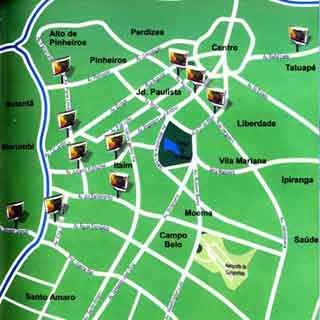 |
 |
| Map of Eletromidia screen network in San Paolo (Brazil) | Map of Eletromidia screen network in Rio de Janeiro (Brazil) |
As the market of LED video screens matured, the prices dropped and the competition became fierce. The idea of LED screen networks was approved by various advertising agencies throughout the world. In 2003, “Cityvision” network was launched in Russia; “Clear Channel” created a pilot project of seven LED screens in Detroit and later extended the project to other cities. In Russia, several more companies warmed up to the idea of setting up digital screens: “Optiline”, “Tretij Glaz”, “TriStars”, and others.
Two current tendencies in digital network video advertising:
- Nation-wide networks: large advertisers start setting up LED screens in different cities of the country where they operate. This is the approach adopted by “Clear Channel” and “Lamar” (USA), “Alive Advertizing” (RSA), “JM Network” (Hong-Kong), “Cityvision” (Russia) and some others.
- City-wide coverage: an approach which is smaller in scale but sometimes more efficient. Usually, a regional advertising agency decides to install several LED screens to effectively cover the city (it’s most popular and well-attended areas) with digital advertising. This is the approach adopted by such Russian companies as “Delovoj Mir”, “Molbert & brothers”, “Tretij Glaz”, “TriStars” and others.
It’s important to remind that “Clear Channel Outdoor Holdings Inc.” and its main competitor “Lamar Advertising Co.” both announced plans to install over a thousand LED video screens by 2010 in the USA. It’s obvious that the advantages at operating a digital network are becoming too appealing for large companies to disregard.
For us, the market situation in Russia is understandable better; therefore we’ll dwell on some examples from Russia.
Advertisers are mostly interested in the audience, in coverage and in frequency of presentation. Therefore, the owners of LED video screens are trying to position them in strategically important key areas of each city. But each city is unique in architectural design. Consequently, the approaches to placing LED video screens are different. For example, Moscow is structured as several circles with different radii; Washington is a classic grid of crossing streets.
Currently, all main cities in Russia are overloaded with outdoor advertising. Municipal authorities are trying to control the advertising boom and set up rules for placing advertising structures. As a result, the number of advertising surfaces tends to shrink in the areas of historical center, near museums, theatres and churches.
It is in such areas where the presence of digital displays is becoming more and more important. Digital boards offer advertisers efficiency, flexibility and fast-response capability that is impossible in any other type of outdoor advertising. Naturally, digital networks will continue to steadily grow in the foreseeable future.
At present, apart from Moscow and St. Petersburg, video advertising networks have been set up in several other cities of Russia: Vladimir, Voronezh, Ekaterinburg, Kaliningrad, Samara, Lipetzk, Perm, Tyumen and Chelyabinsk. All these networks have been in operation for more than a year and proved to be commercially successful and popular among local citizens and city authorities. Among the most efficient Russian digital LED video screen operators are:
CityVision
This is a national digital LED screen network with displays positioned in many cities of Russia.
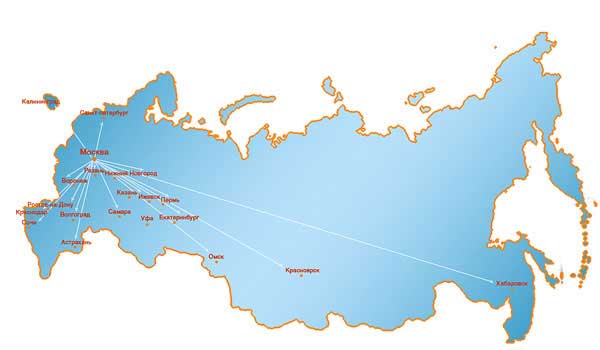
CityVision LED video screen network
Optiline
Today this advertiser possesses a network of 18 screens near metro stations in St. Petersburg. The network is rumored to start growing soon.
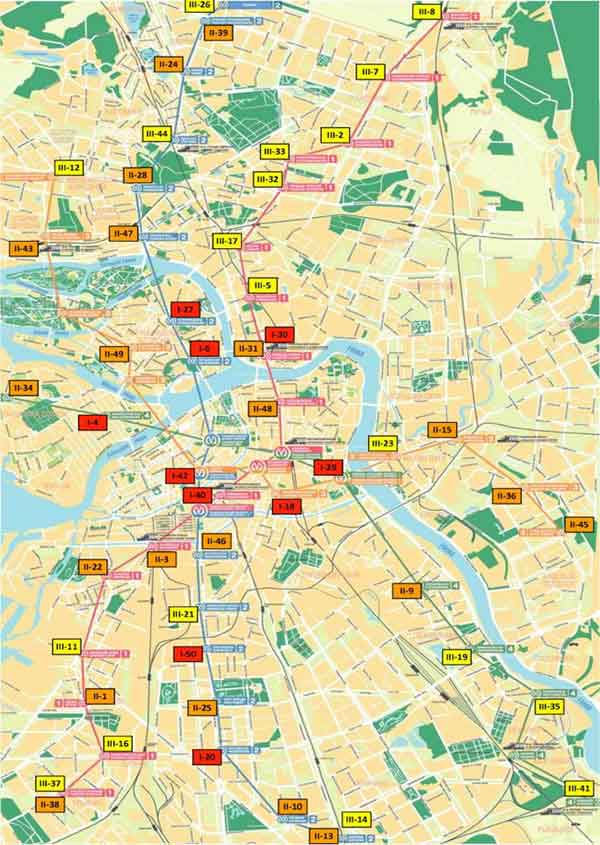
The map of St. Petersburg with LED screens along existing metro lines.
The network is owned and operated by “Optiline” advertising agency.
Tretij Glaz
The company currently operates 10 LED screens in St. Petersburg.
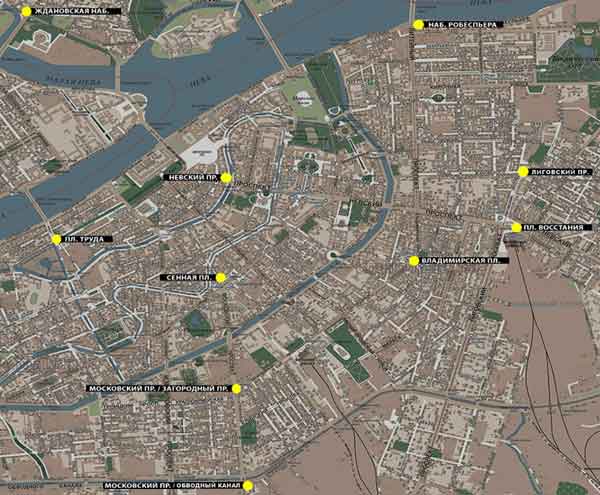
The map of St. Petersburg with 10 LED screens controlled by “Tretij Glaz” advertising agency
TriStars
The company owns a network of 12 LED screens in Moscow.
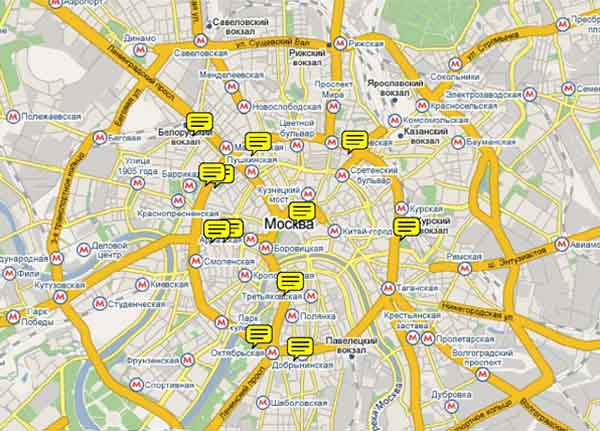
12 LED screens strategically placed along the prestigious circle road of “Garden Ring” in Moscow.
The network is operated by “TriStars” company.
Map: Google Maps
Molbert and Brothers
The company currently operates 5 LED screens in Kaliningrad.
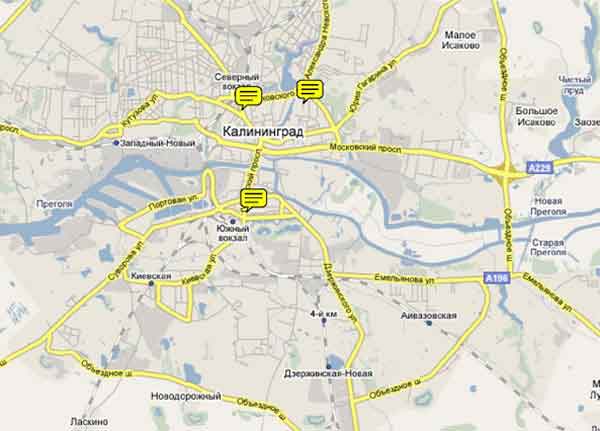
A 5 LED screen network in Kaliningrad that belongs to “Molbert and Brothers” advertising agency
Map: Google Maps
A few other examples on how advertising agencies tend to position their network of LED screens on city map:
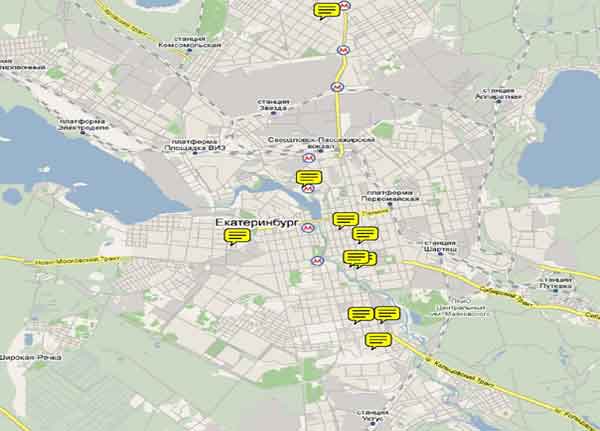
A 10 LED screen advertising network in Ekaterinburg
Map: Google Maps
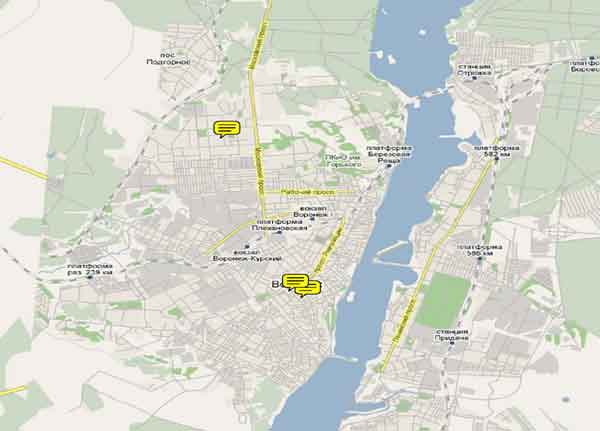
Three LED video screens linked in a network in Voronezh
Map: Google Maps
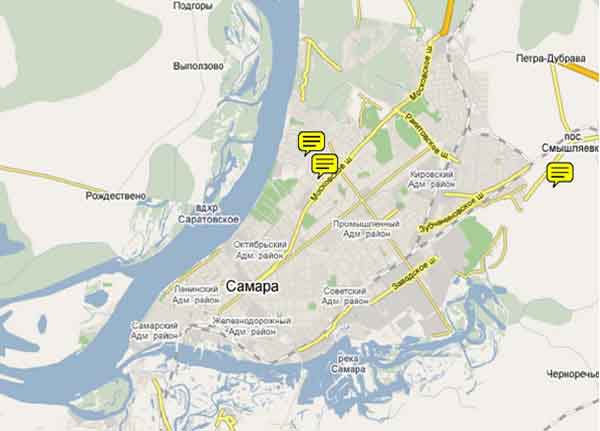
Three LED video screens in Samara that form a local digital network
Map: Google Maps
Most of the cities mentioned so far are located in the European part of Russia. However, the Asian territory is also developing fast and advertisers hurry to set up their own digital networks there as well. A good example is the oil-rich city of Tyumen. A small city by Russian standards boasts a network of 18 screens that is currently operated by the company “Delovoj Mir”.
We cannot list in this short article all video networks currently operating in outdoor market of Russia. Our aim is simply to draw the attention of our readers to the modern tendency of replacing traditional static advertising to digital carriers. We believe that conceptually the battle has been won and the future of advertising lies with networks of digital video LED screens.





